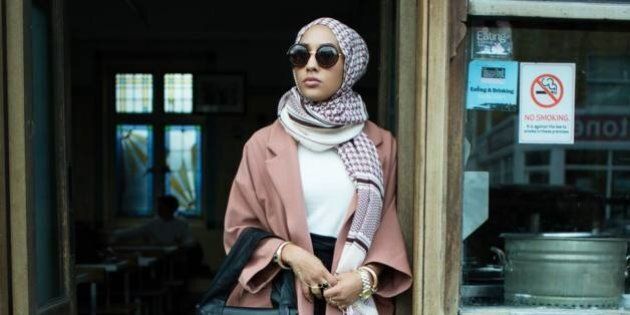
The lack of cultural diversity in the advertisements of mainstream fashion has always been a bitter reality. I never thought I'd see a Muslim model, Mariah Idrissi wearing the hijab in an ad of a world-famous brand, and I hope it won't be the last.
Many Muslim women wear the hijab for various reasons. The simplest and most popular one, maintained by Muslim scholars, is that God has made it an obligation for women to cover themselves and dress modestly. Thus, for some, the ad is an exploitation of a religious component turned into a fashion accessory.
Kicking religious dogma and its leaders aside, I chose to focus on what the hijabi women are saying about the hijab in Islam.
The dress code of Muslim women, according to Aisha Stacey, an Australian revert to Islam and writer, should follow certain guidelines that must be fulfilled, such as "it should not be extravagant or excessively opulent. Nor should jewelry and makeup be on display." Also, "it should not be a garment worn because of vanity or to gain popularity or fame."
Hijabi stylists and fashion bloggers, such as Adlina Anis, the only hijab-wearing women in Singapore's mainstream fashion industry, and Helima Begum, founder of WWAGS, a hijab styling company and modeling agency for Muslim women, do wear vibrant jewelry and makeup. They have also gained a large fellowship on social media such as Twitter and Instagram that have turned them into popular icons of modest fashion. It challenges what the guidelines have defined as proper Islamic clothing.
Flare -- Canada's fashion magazine -- have asked five Muslim women, including Adlina Anis and Helima Begum, "how they experience wearing hijab in a decidedly immodest industry."
"Modesty is what every individual makes of it. I don't think there's only one way of being a Muslim, just like there isn't just one way to wear the hijab," says Begum.
"There's a lot of prejudice and it's really difficult for anyone wearing hijab to try to enter the fashion industry here. At first I was affected by it, but now I'm not because I'm proud of who I am. Styling on a fashion shoot is where I can express myself creatively; whatever I wear personally is who I am with God," says Anis.
These women aren't separating their spirituality from personal or creative expression. Through their love of fashion, they are showing the Muslim community and the world that the hijab can be a unique expression of a woman's vision of beauty combined with faith.
As a profit-driven company, the new H&M ad is a great marketing strategy to reach a wider group of potential buyers. The motive is clear. However, what's important is that the hijab wasn't represented as a manifestation of women oppression or religious extremism, but as chic and beautiful.
By having the mainstream fashion industry represent women and men from different cultural and religious backgrounds, stereotypes and beliefs towards a group of people can be challenged. It is a step towards making unseen people seen.
MORE ON HUFFPOST:
